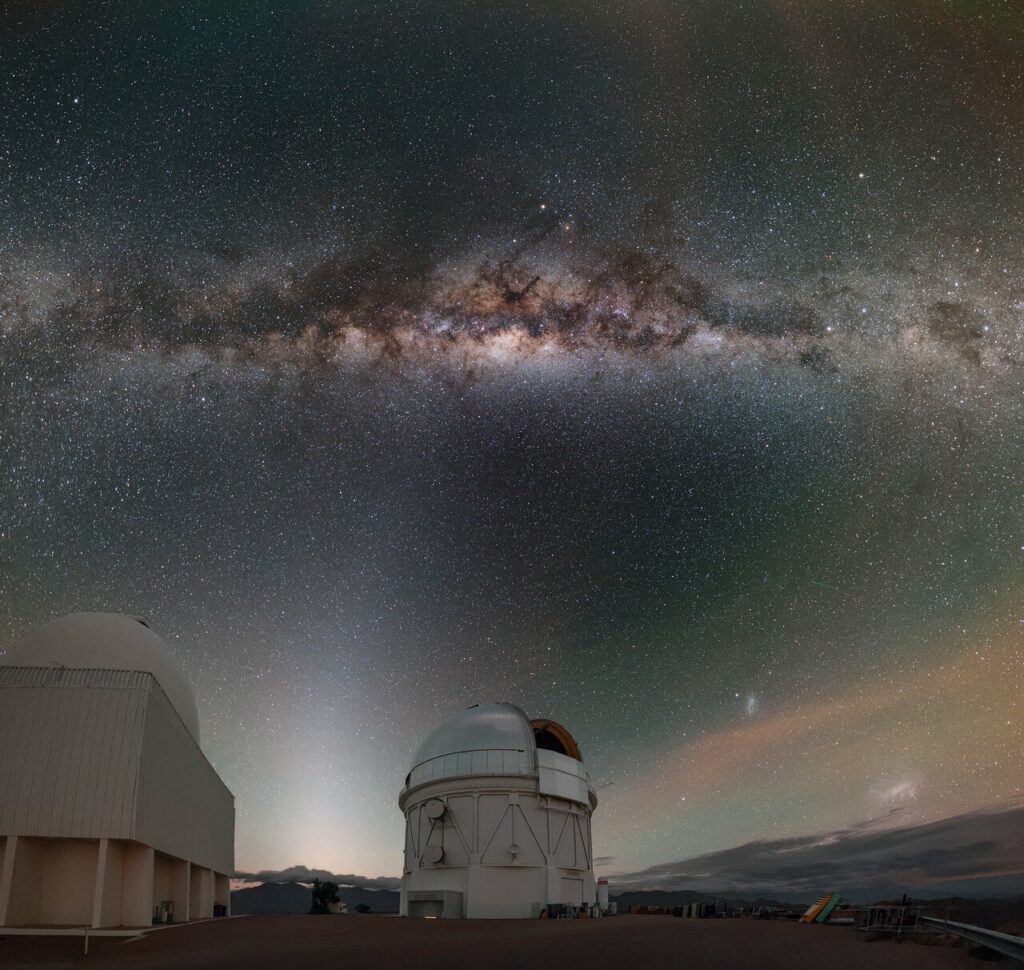The staff of the Cerro Tololo Inter-American Observatory published a photo showing what the night sky looks like over the telescope complex.

Light pollution has practically deprived urban residents of the opportunity to admire the beauty of the night sky. Therefore, it seems to many that if you move as far away from civilization as possible, then an inky-dark sky dotted with many bright stars will open up to their eyes.
But, as the presented photo demonstrates, this is not the case. In reality, in the absence of light pollution sources, the night sky does not turn pitch black. Instead, a subtle palette of colors appears on it, arising from various phenomena. One of them is a phenomenon called the proper glow of the atmosphere. It can be seen in the image in the form of a red-green stripe near the horizon. This glow occurs due to chemical reactions in the upper layers of the earth’s atmosphere.
In the image, we can also see another interesting phenomenon in the form of a vertical light strip. This is the zodiacal light. It is observed shortly after or before sunrise. The cause of the glow is the scattering of sunlight on interplanetary dust particles. The phenomenon got its name because of the constant visibility in the zodiac constellations.
In addition to its own glow of the atmosphere and zodiac light, in the photo from Cerro Tololo you can also see a dazzling strip of the Milky Way, densely strewn with stars and dust clouds. And in the left part of the picture, there are two “foggy” clouds. These are our closest galactic neighbors: the Large and Small Magellanic Clouds.
According to https://noirlab.edu
Follow us on Twitter to get the most interesting space news in time
https://twitter.com/ust_magazine
